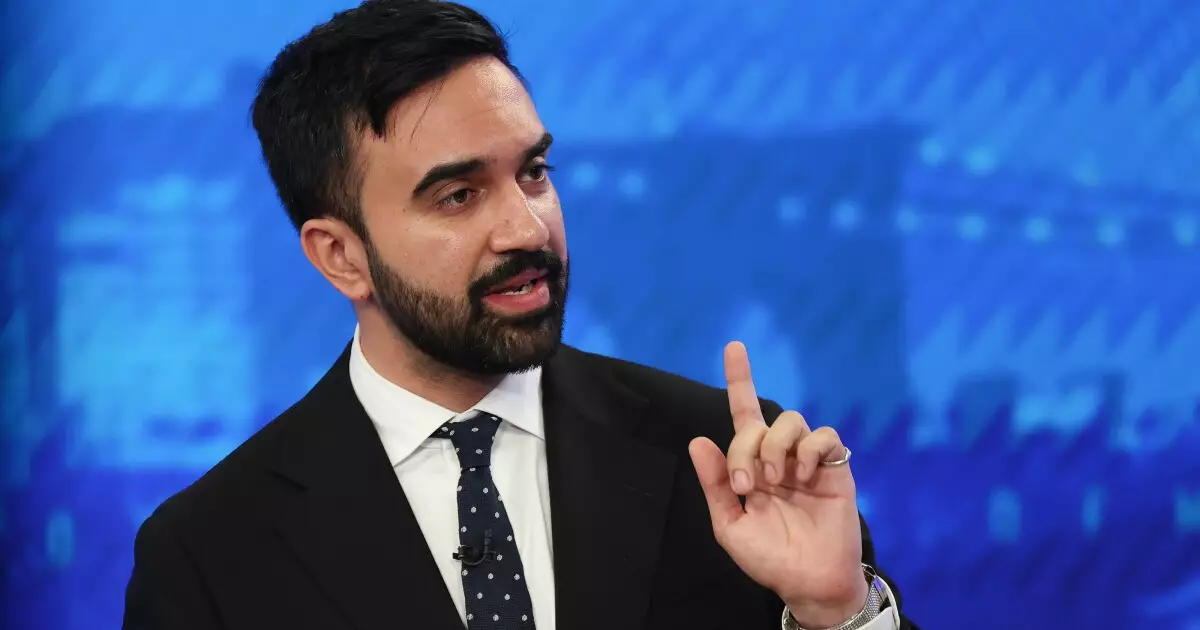New York City is at a critical juncture, grappling with a spiraling housing crisis exacerbated by rising costs and diminishing availability of rentals. Enter Zohran Mamdani, a member of the Democratic Socialists of America, who has proposed an audacious plan intended to tackle the affordability problem through monumental borrowing. His proposal to borrow an additional $70 billion over the next decade on top of an existing $25 billion allocated for affordable housing raises alarm bells about fiscal responsibility and long-term consequences for the city’s economy.
Mamdani’s proposition hinges on the assertion that increasing the city’s borrowing capacity will somehow resolve the affordability crisis. However, he doesn’t seem to clarify where this astronomical sum would come from or, more importantly, what sacrifices will be made to accommodate such an ambitious plan. He acknowledges that state approval will be required for this level of borrowing, a process that isn’t usually a walk in the park considering the existing restrictions on local government debt. It appears that this proposal lacks a detailed roadmap, revealing a troubling neglect of the distinct financial limits that New York City faces.
Rethinking Fiscal Responsibility
While the aspiration for more affordable housing is commendable, one cannot ignore how Mamdani’s strategy bears more resemblance to a drastic escalation of fiscal irresponsibility than a serious approach to solving a complicated issue. With the city already facing $104 billion in outstanding debt, an additional $70 billion could tie the hands of future administrations, limiting their ability to implement essential services and public programs. Critics like Howard Cure from Evercore Wealth Management have voiced concerns about the implications of increasing fixed costs in a high-interest-rate environment, highlighting the potentially dire impact of this debt on New York City’s financial stability.
Is plunging deeper into debt truly the answer? Rising debt service from existing obligations already consumes approximately $7.7 billion annually, a figure that will only worsen with Mamdani’s proposed financial maneuvers. Rather than look to further deepen the financial stranglehold on New Yorkers, it’s time to consider alternative solutions that stay within our fiscal means and foster sustainable growth.
Unrealistic Housing Goals
Mamdani’s ambition to create 200,000 rent-stabilized units within ten years is another focal point that raises eyebrows. While the intentions behind the idea may be rooted in the noble goal of affordability, executing such a vision is fraught with logistical and bureaucratic challenges—especially in a city with a complex regulatory framework. His plan to double the capital spending on rehabilitation for public housing is admirable; however, it seems disconnected from the larger context of how such objectives intersect with the city’s financial capabilities.
Furthermore, specifics on funding avenues or partnerships that might facilitate this goal are noticeably absent from his proposal. This lack of detailed plans indicates a naïve approach that underestimates the intricacies involved in urban planning and housing development. Cheaper apartments can’t magically materialize by simply throwing money at the problem; strategic policy changes need to be implemented alongside any financial commitments.
The Role of Taxation in A Housing Strategy
A significant aspect of Mamdani’s monetary strategy revolves around raising corporate taxes and introducing a new income tax for residents earning over $1 million annually. While these proposals might resonate with some voters frustrated by income inequality, they could inadvertently drive high earners and businesses out of the city—an outcome that would further deteriorate the economic landscape and reduce the tax base needed to fund public housing initiatives.
With the exodus of wealthier residents, the potential tax revenue risks dwindling, leaving the city vulnerable to budget deficits and poor fiscal health. It’s essential to balance the need for funding public initiatives while still providing an environment that attracts businesses and talent to the city. Mamdani’s approach does not seem to strike such a balance, potentially alienating the very individuals and entities necessary for real economic revitalization.
Mamdani’s vision, while undeniably ambitious, seems rooted more in ideological aspiration than pragmatic realism. The goal of providing affordable housing is universally acknowledged, yet the path outlined raises troubling concerns about debt sustainability and the viability of tax increases. As New Yorkers, we must prioritize fiscal prudence, ensuring that the strategies adopted do not further entrap future generations under the weight of unsustainable debt while simultaneously threatening the very fabric of our economic structure. As we look towards the future, we must demand a nuanced approach that aligns aspirations with financial realities, rather than setting the stage for a potential fiscal catastrophe.

